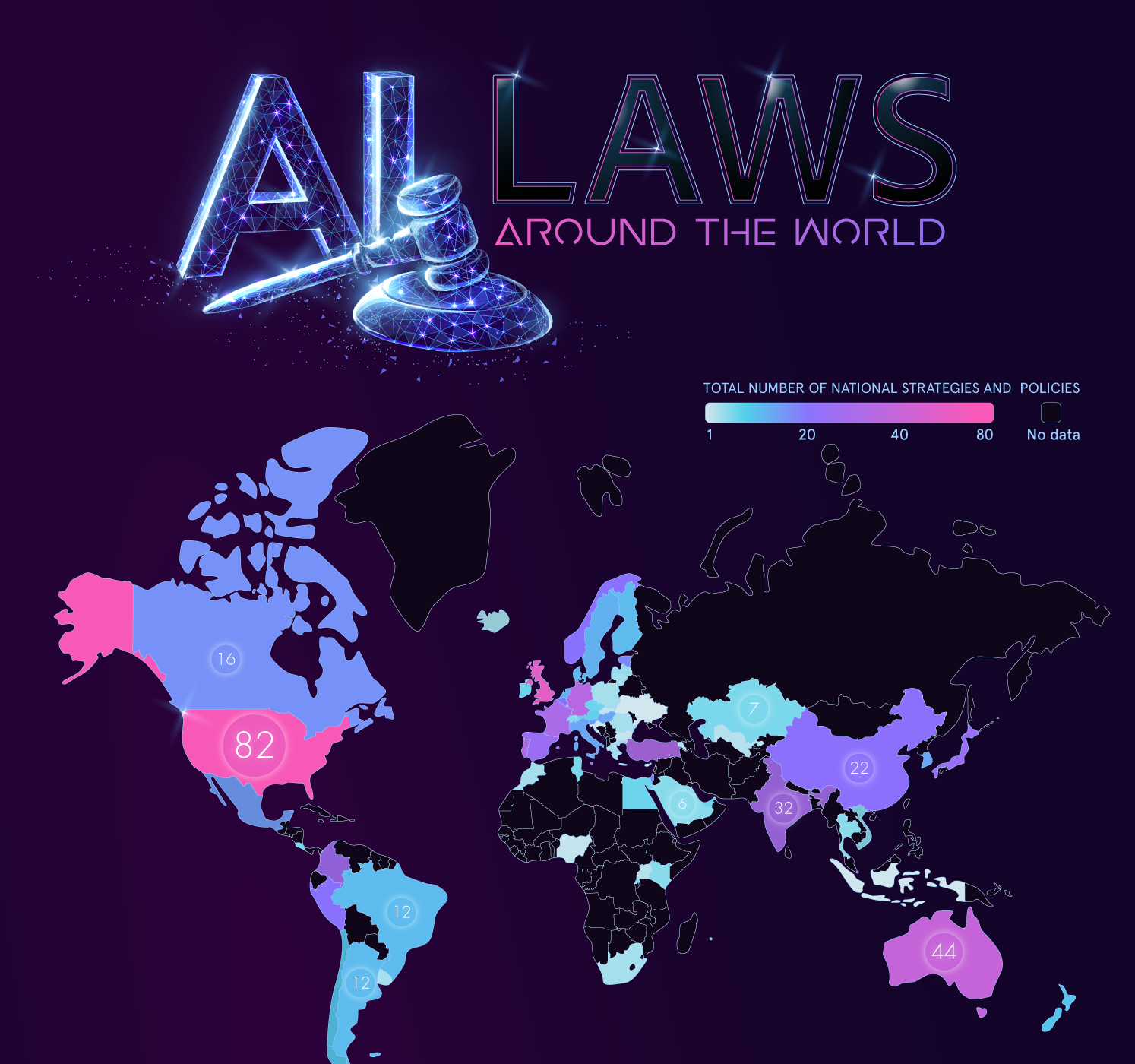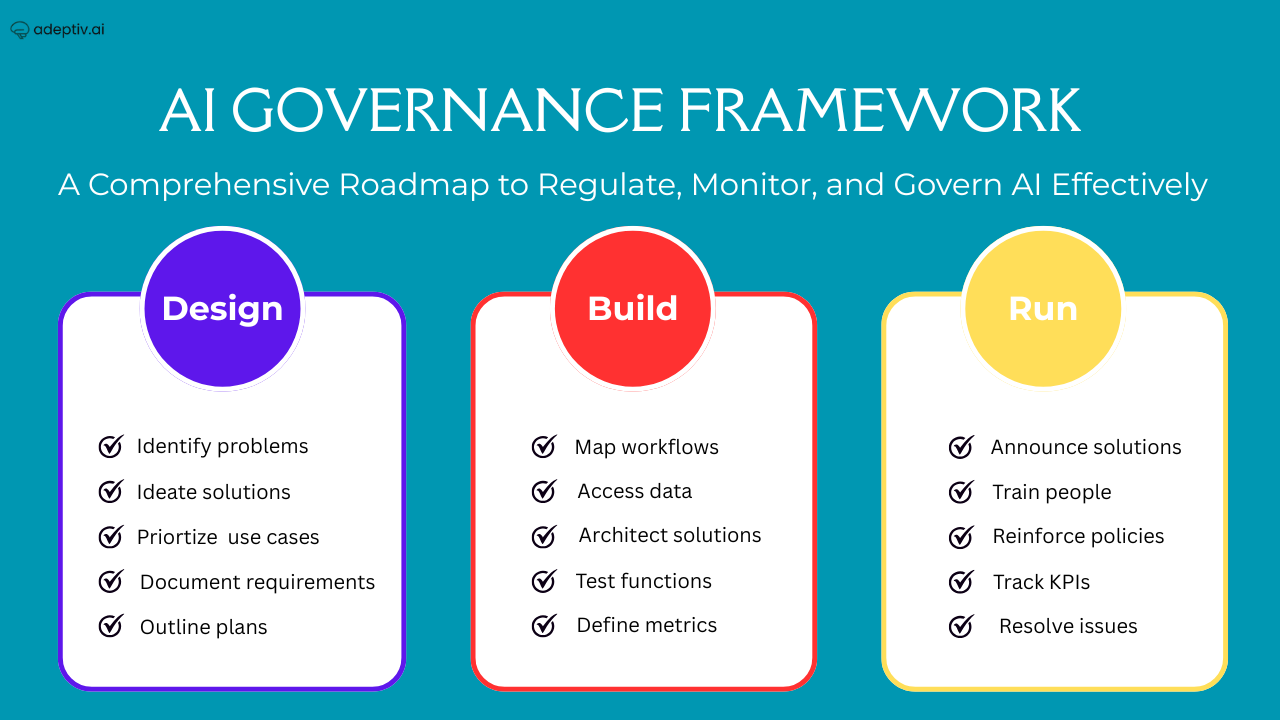At a Glance
- Provides a thorough map of the latest (2025) laws, regulations, and policy models governing AI across major global economies.
- Highlights the differences between risk-based frameworks (EU), flexible/localized approaches (US, Middle East), and compliance-driven systems (China, Singapore).
- Examines practical impacts for organizations deploying AI Law: who must comply, which obligations are mandatory or optional, and real penalties for non-compliance.
- Explores groundbreaking regulations such as the EU AI Act, China’s Algorithmic Regulation, US state-level AI Acts, and sectoral initiatives worldwide.
- Unpacks trends in AI transparency, risk classification, fairness, ethics, and technical audit obligations.
- Outlines future trends: convergence, global alliances, and the evolving “compliance opportunity” for AI-driven enterprise.
Introduction
The global race to regulate Artificial Intelligence is fundamentally changing how organizations design, scale, and deploy AI. No longer the frontier of speculation, AI compliance now sits at the crossroads of innovation and accountability.
As new governments enact sweeping, nuanced, and sometimes contradictory regulatory regimes, C-suites and product teams face a stark question: Are you ready for tomorrow’s AI laws—or at risk of being left behind?
This in-depth guide unpacks the world’s most important AI regulations (as of late 2025), with a clear focus on real business impact: compliance, growth, and reputation.
I. The Three Models of AI Regulation
1. The Risk-Based Model – The EU’s Pioneering Approach
EU AI Act (2025)
- First comprehensive, legally binding AI law worldwide.
- Core idea: risk-tiered regulation.
- Bans “unacceptable risk” AI (social scoring, exploitative systems, mass surveillance for law enforcement).
- Requires stringent controls and transparency for “high-risk AI” (medical, critical infrastructure, education, transport, hiring).
- Proportional obligations for “limited” or “minimal risk” AI.
- Penalties: Fines up to 7% of global revenue.
Implementation & Extra-Territoriality:
- Any AI that touches the EU market (even if made/deployed outside) must comply.
- Obligations: Transparency, human oversight, data governance, bias mitigation, documentation, auditing.
2. The Flexible, Decentralized Model – US & “Pro-Innovation” Jurisdictions
United States
- No overarching federal AI law.
- Sectoral laws, agency guidance, and new state-level regulations (e.g., Colorado AI Act, New York hiring transparency, California’s deepfake/child protection).
- Emphasis: Innovation, voluntary guidelines, civil rights enforcement.
- Executive guidance changes rapidly with each administration.
- Enforcement through FTC, DOJ, SEC, and state attorneys general.
UK & Japan
- “Principle-based” oversight: Sectoral guidance, ethics codes, and voluntary/advisory frameworks for AI transparency, fairness, and human oversight.
- Moves to “hard” law for high-impact use cases in progress (finance, health, public services).
3. The Prescriptive, Command-and-Control Model – China & Heavily Regulated States
China
- Mandatory registration, content controls, real-name system for public-facing AI.
- Proactive bans (e.g., on deepfakes, illegal content), real-time technical audits, watermarking, and authentication.
- Fast-evolving, with sectoral interventions for finance, health, and national security.
Middle East (UAE, Saudi Arabia), Israel
- Heavy investments, national AI strategies.
- Mix of voluntary ethics guides, mandatory privacy/data security laws, selective bans.
- Data localization and sovereignty principles are central.
II. Cross-Border Operations: What Enterprises Must Know
- Compliance is now a market-access necessity—from GDPR-like privacy rules to unique AI Law documentation in the EU.
- Global reach: Most regulations claim jurisdiction over foreign providers if their systems reach local users.
- Real-world costs: Not just fines, but business bans, lost partnerships, inability to sell, litigation, and reputational harm.
III. The Compliance Opportunity
- Emerging best practices: Ethical impact assessments, algorithmic auditing, AI documentation, and human-in-the-loop controls.
- Winning companies turn compliance into trust—picking up market share as competitors get locked out.
- The governance ladder: From voluntary codes (OECD, UNESCO) to sector-specific hard laws, mature organizations must scale up readiness to stay competitive.
IV. Focus Areas in Today’s AI Laws
- Transparency & Explainability: Required for high-risk AI (EU, US, Singapore); models must be intelligible to business users and external auditors.
- Non-Discrimination & Fairness: Explicit obligations (bias audits, mitigation plans) in hiring, lending, and medical decision-making.
- Human Oversight: Mandated “off-switches,” logging, review, and transparency—especially in safety-critical sectors.
- Security, Privacy, and Data Protection: Local storage mandates, privacy controls, cyber-resilience, and new cross-border data limits.
- Technical Documentation: Certifications, third-party audits, and regulatory reporting.
V. Looking Forward: What’s Next (2026+)
- Growing convergence as G7/G20, OECD, and UN push for harmonized risk, transparency, and fairness standards.
- Ongoing divergence where local laws reflect national security, economic, or cultural priorities.
- More “AI sandboxes”: Regulator-approved experiments to safely test AI innovations before wider rollout.
FAQs
1. What happens if an organization ignores a new AI law?
They risk fines, product bans, exclusion from government contracts, lawsuits, and—most damaging—loss of market trust.
2. Which countries have the strictest AI rules?
Currently, the EU, China, and select US states like Colorado. The EU AI Act is the most comprehensive, with demanding obligations for “high risk” AI.
3. Will global companies need to comply with all regulations?
Yes, if their AI products or services cross borders. The safest route is to meet the “highest bar” across markets.
4. What’s the biggest trend in AI law for 2025?
Risk-based regulation with a focus on transparency, fairness, and auditability—plus increasing coordination among major economies.
5. How can businesses prepare for emerging AI laws?
Build AI governance teams, embed risk assessment and bias checks in their workflows, create audit trails, and monitor legal changes in each market.



